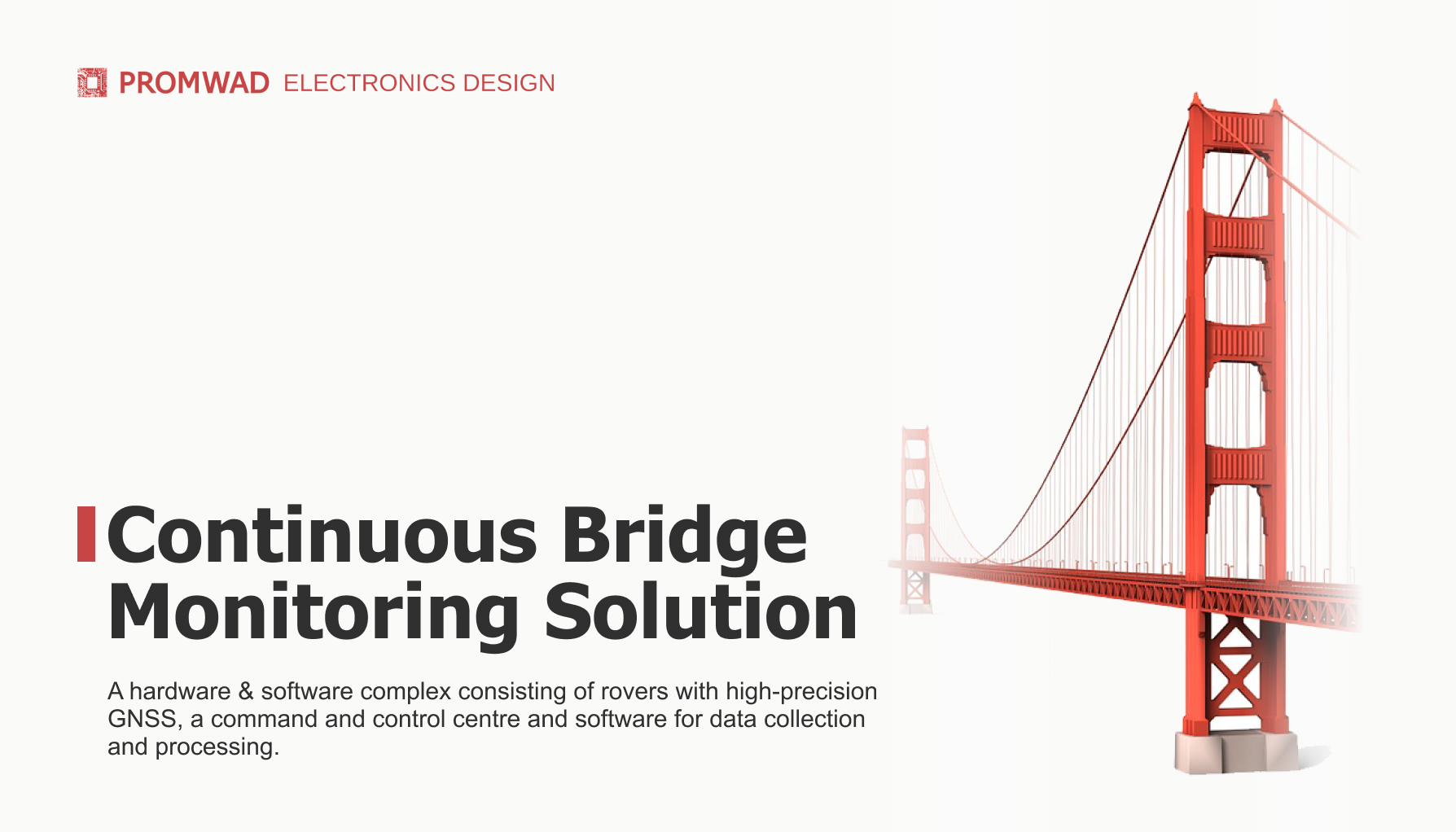Development of NDT Bridge Solution Based on RTK Technology
Project in a Nutshell: We developed a hardware and software system for continuous bridge monitoring based on real-time kinematic (RTK) technology and using GNSS receivers. The system transmits data for analysis to the monitoring centre ten times per second so the condition of the structure can be monitored continuously. With such a system, our client will optimise the maintenance schedule and cost and extend the service life of the bridge infrastructure.
A similar system can be designed for structures that require continuous monitoring, such as buildings, high-rise constructions, or railways.
Client & Challenge
Our client, a bridge maintenance company in a seismically active area, needed a solution to continuously monitor bridge stability. They approached Promwad with the task of developing a system that would be able to monitor in real-time any early signs of deformation or structural damage across the entire bridge span
Solution
We developed the system, which is a complex hardware and software system consisting of the following key components:
- Rovers and base are devices equipped with high-precision GNSS receivers that are installed at strategic points on the bridge to measure its geometry and condition. Real-time kinematic (RTK) technology provides measurement accuracy down to a few millimetres and allows real-time monitoring of any deformation of the bridge caused by environmental influences: wind, vibrations or seismic activity.
- The command and control centre is where data from the rovers are processed and analysed. Operators receive real-time data on the condition of the bridges.
Currently, our client's solution works in manual monitoring mode, but in parallel, the Promwad team is working on its integration with automated decision-making systems. Automation will reduce the influence of human factors and shorten the time required to activate alarm protocols.
- Software that collects and processes data from rovers and performs sophisticated analyses to identify anomalies and predict destructive processes. The software detects changes in the geometry of the bridge — deflection, vibrations or structural shifts — and suggests preventive measures based on them. Most often, these are traffic restrictions or maintenance inspections.
Data transmission from rovers to the control centre via wireless communication channels based on LTE technology.
The system works at a frequency of 10 Hz, i.e. it updates data 10 times per second. The positioning accuracy of the rovers based on base station correction data can reach 3-5 millimetres. Angular accuracy between base station and rovers is less than 0.01 degrees. Constant updates on the status of the structure will allow the operator to react instantly to any abnormalities and potential threats.
Business Value
Our client received a system that will ensure the safety of its accountable bridges in seismically active regions. The company can receive real-time data on the structural integrity of each bridge. By continuously monitoring the bridge, not just localised points, the client can detect early signs of damage and take preventative measures. With such a system, our client will reduce the risks of catastrophic failure, optimise maintenance schedules and costs, and extend the life of the bridge infrastructure.
A similar system can be designed for any structure where continuous monitoring of the whole construction, rather than individual parts, such as a building or railway, is required.
More of What We Do for Measurements
- Sensor Development: explore our services for the development of customised sensor systems with pre-configured software.
- Air Quality Monitor: a case study of developing a wearable IAQ monitor to monitor indoor pollution, temperature and noise levels across seven key parameters.
- 3D Ultrasonic Tomography for NDT: our research in the development of FPGA-based 3D ultrasonic tomography for non-destructive material inspection




















